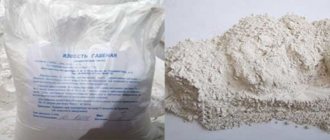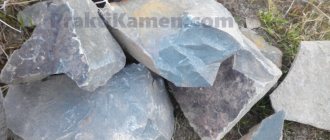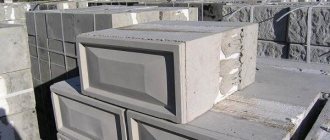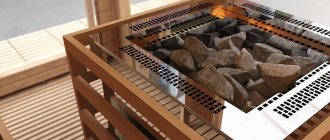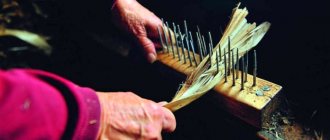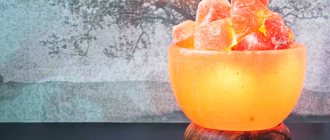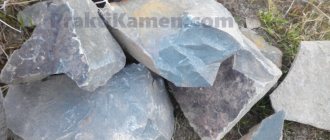"Royal Stone" offers wholesale and retail diabase of various colors and sizes. Order a stone from us!
Diabase is considered one of the oldest rocks of volcanic origin. It is classified as hypabyssal because this rock is formed at shallow depths. By origin, this mineral occupies an intermediate position between deep-seated and extrusive rocks of igneous origin.
This stone is rarely found in nature and is valued for its strength and beautiful appearance. Diabase is mined on an industrial scale, and its natural reserves amount to millions of tons.
However, this stone cannot be called ordinary. Interior decorations made from this material (writing instruments, figurines, chess sets, jewelry boxes, etc.) are very expensive.
History and origin
The appearance of powerful deposits of diabase, called traps, according to geologists, is caused by global changes in the depths of the planet. As a result of the processes, huge accumulations of magma approach the upper tier of the soil.
The largest deposit is located in Hindustan. Geologists say that the mineral appeared as a result of the release of magma to the surface of the earth after a collision with a huge meteorite.
The main deposits are formed in areas where volcanic lava and tuff are concentrated. Diabase is developed from sedimentary mountain deposits.
What is the breed
As you can already judge from the name, this stone is a “transitional” link between diabase and gabbro. According to its characteristics, the rock is close to basalt and granite. It is a gabbro-diabase stone of a dark gray or greenish color. It contains, for example, minerals such as:
- titanomagnetite;
- plagioclase;
- pyroxenes;
- amphiboles.
None of these types of minerals release harmful substances into the air. And this is, of course, a big advantage of gabbro-diabase as a stone used in industry, construction and everyday life.
Mineral mining
Fossil deposits are extensive. The most popular and studied places are the Deccan Plateau in Hindustan, the plain in Argentina, and Brazil. Minerals are mined in Ireland, Finland, and Russia. In the Russian Federation, deposits are located in the Urals, Altai, and in the region of the East Siberian Upland. In South America, monoliths are characterized by voids in which the amethyst is located.
To ensure that the fossil is not damaged during the extraction process and maintains its structure, gentle methods are used. How the first one works:
- First, a hole is drilled into the mineral.
- Then explosives are placed so that the rock blocks remain at their maximum size after the explosion.
Another option is characterized by changing the bomb to use a hydraulic method. The pit is filled with water under pressure. She tears the rock apart.
The latter option implies that the minerals are mined using a professional stone cutter equipped with a diamond-wire sawing mechanism.
Interesting to know! To extract gabbro monolith, special crushing equipment is used, which at the output will allow you to pick up pieces of different sizes and shapes.
Subtleties of choice
Round-shaped stones are used for sauna stoves
When purchasing, you should pay attention to specimens with small crystals. The smaller the crystal size, the more durable the stone is considered and the longer it will last.
Regardless of the purpose for which dolerite is purchased, it must be intact, without cracks or splits. If the initial visual inspection does not reveal any, check it for internal damage. To do this, just knock two samples of stone against each other or hit it with something heavy.
Diabase is inferior in strength to jade, but a high-quality stone should withstand a moderate impact.
Another simple way to test the quality of diabase for strength is to heat it to the maximum, and then quickly splash cold water on it - the sample should not crack. A newly purchased stone should be used for idle heating for the first time, so that all possible foreign impurities burn out.
Sometimes careless sellers try to sell another rock instead of dolerite - for example, granite. Outwardly, these two stones may be very similar, but upon closer inspection, it is clear that dolerite has a more uniform color, and granite contains small particles of quartz. They are visible even to a non-specialist. In gabbro-diabase you can also see crystalline particles - this is sulfite, which differs in appearance from quartz.
Dolerite
Granite
You can learn about the features of using gabbro-diabase in a bath in the following video.
Physicochemical characteristics
The stone is resistant to frost. It withstands temperature fluctuations. Education can withstand 300 cycles of weather changes without damage. The strength is very high, superior to granite.
| Property | Description |
| Hardness | 7 |
| Microhardness | 7 - 10 GPa |
| Compressive strength(limits) | 400 - 500 MPa |
| Specific radioactivity | up to 74 Bq/kg |
| Abrasion | 0.07 g/cm² |
| Water absorption level | 0,1% |
| Density | 2.79 – 3.3 cm³ |
Also read: Hyacinth - protector from misfortunes
Chemical composition:
- SiO2 43-52%,
- Al2O3 8-27%,
- Fe3O4 1.8-25%,
- CaO 8-18%,
- MgO 3-15%,
- TiO2 0.1-4%,
- Na2O 0.5-3.5%,
- K2O 0.05-2%.
Types of stone
A popular stone is gabbro-diabase. The Karelian fossil is unique, since it has no competitors in Russia in terms of physical and chemical properties. The approximate volume of mined deposits is around 4 million cubic meters.
The composition of the rock retains heat well and transfers it. Also, the fossil does not lose its artistic qualities and polishing characteristics for a long period. In the whole world there are only two areas with mineral deposits - Australian and Ukrainian.
The mineral is classified by content and composition. The monolith contains quartz, ilmenite, olivine, biotite, chlorite compounds, which give the rock its green color, calcite, and limonite.
The composition of the breed is:
- augite - a species from North Wales that has grains of augite.
- albite – diabase from Krasnaya Polyana in the Caucasus, described by Belyankin.
- amphibole - among the minerals of which there is primary brown hornblende, which is sometimes abundant, and sometimes in a subordinate amount to augite.
- analcime - a vein-grained variety with analcime, which most likely, as in augite teschenite, was formed from nepheline.
- anorthite.
- bronzite.
- variolite - from Temelpace Mountain, California. It consists of oligoclase laths in subordinate quantities and thin augite prisms, which are placed in the groundmass consisting of calcite, chlorite and leucoxene.
- diallag - a variety with a predominance or exclusive dominance of diallag.
- dipyr - formed from dipyr and salite-like augite.
- aphanitic – at a given moment in time it is paleotype basalt or basaltic porphyrite.
- vein - a paleotype mafic vein rock consisting primarily of mafic plagioclase and augite.
- grainy.
- needle.
- quartz - together with pyroxenes and basic plagioclase, it contains quartz. Potassium feldspar is often present together with quartz, forming micropegmatite intergrowths with quartz.
- malacolithic.
- amygdaloid - consists of oligoclase, individual crystals of albite and relict grains of augite, enclosed in the groundmass of chlorite, calcite, ilmenite and leucoxene.
- olivine.
- pegmatite.
- ash.
- porphyritic.
- spotted - a breed of the Upper Harz, previously classified as variolites.
- hornblende.
- salite - diabase with many euhedral crystals of monoclinic pyroxene.
- syenite.
- mica - more or less significant content of biotite.
- saussurite - more or less saussuritized feldspar.
- teralite.
- spilite - from Weilburg, Germany.
- tuff - dense augite porphyrite, light, dark gray or black from Keweenaw Point.
- uralite.
- ball.
- alkaline.
- enstatite.
- essexitic - alkaline diabase of the essexite-teralite series, in contrast to ordinary diabases of the gabbro type. Sometimes contains nepheline, aegirine or alkali amphiboles.
- aplite - consists primarily of feldspar group minerals and was formed not by the injection of granite into diabase, but by the splitting of the same magma into two rocks.
Also read: Tektite – formed after the collision of the Earth and a meteorite
Deep in volcanic rocks, minerals can form large deposits and sills. Crimean mineral is the cheapest. It consists of iron impurities, which reduces its quality.
Subtleties of choice
Round-shaped stones are used for sauna stoves
When purchasing, you should pay attention to specimens with small crystals. The smaller the crystal size, the more durable the stone is considered and the longer it will last.
Regardless of the purpose for which dolerite is purchased, it must be intact, without cracks or splits. If the initial visual inspection does not reveal any, check it for internal damage. To do this, just knock two samples of stone against each other or hit it with something heavy.
Diabase is inferior in strength to jade, but a high-quality stone should withstand a moderate impact.
Another simple way to test the quality of diabase for strength is to heat it to the maximum, and then quickly splash cold water on it - the sample should not crack. A newly purchased stone should be used for idle heating for the first time, so that all possible foreign impurities burn out.
Sometimes careless sellers try to sell another rock instead of dolerite - for example, granite. Outwardly, these two stones may be very similar, but upon closer inspection, it is clear that dolerite has a more uniform color, and granite contains small particles of quartz. They are visible even to a non-specialist. In gabbro-diabase you can also see crystalline particles - this is sulfite, which differs in appearance from quartz.
You can learn about the features of using gabbro-diabase in a bath in the following video.
Scope of application of the mineral
Gabbro is the main material for making monuments. The breed is reliable, durable, and helps create a strong structure. A monument from education will last a long time.
The fossil is processed using the latest technologies. The Crimean monolith is used to create tombstones.
Historical buildings were made from the Crimean diabase - Red Square and the Vorontsov Palace in Crimea.
In industry, the rock is used as stone, crushed stone for concrete, railways, and rigid monoliths are used for paving streets or large-scale construction. And sometimes the mineral is used for the production of cast products.
Due to its high heat capacity, thermal conductivity and thermal diffusivity, the stone is recommended for the construction of saunas and baths.
Moreover, it is used both as the main material and for decorating individual elements. The monolith heats up quickly, transfers heat well, and is resistant to strong heat and sudden temperature changes. Gabbro is used for laying at the very bottom; if the mineral is expensive, then for the top part. Some owners fill the stove with it.
Having equipped the furnace with dialysis, you need to heat it dry to remove possible harmful impurities.
Some owners complain that a gabbro stove gives off a terrible smell. Often the reason lies in sulfides. They look like small specks or crystals lying on the surface. They are easy to see - they shine like metal.
IMPORTANT! You need to inspect Karelian diabase especially carefully, since its price is cheap; unscrupulous manufacturers offer the buyer low-quality goods with sulfides. The substance often clogs the airways.
Mineral formation is environmentally friendly; the main thing is to purchase high-quality material.
Also read: Syenite is a quartz-free volcanic rock
Price
You can purchase diabase, dolerite and gabbro-diabase in the widest range (from crushed stone to large blocks) via the Internet.
The price of the stone is relatively low:
- Chopped or rolled gabbro-diabase, intended for saunas or baths, is sold in corrugated cardboard boxes (20 kg each). The cost of 1 box is 230-250 rubles.
- The cost of diabase crushed stone is 300-450 rubles. for 1 t.
The price of diabase - depending on the size of the fractions and the degree of processing - can vary between 50-300 dollars per m3.
The final cost of diabase in different regions of the Russian Federation directly depends on how far they are from the place where the mineral is mined.
If the distance is large, then most of the cost of a heavy stone will be its delivery.
Medicinal properties
Thanks to the presence of diabase items in the house, nervous diseases go away and a person becomes calmer. The healing qualities include the ability of the mineral to normalize blood pressure. If you massage with a stone ball, it will have a positive effect on internal organs and systems.
The homogeneous structure of the rock explains its ability to retain and gradually release heat. For this reason, therapists use diabase pebbles for warming up.
Tactile contact of the body with the green stone accelerates the healing of the genitourinary system. If it is crushed into powder and mixed with cream, the medicinal composition will help relieve pain.
Use of diabase
Diabase has found application in the construction industry, is used in the arrangement of baths, and in the manufacture of interior items.
Practice has shown that diabase paving stones last several times longer than granite ones. Facing buildings with diabase gives them solidity; they look aristocratic and monumental. Interior items (window sills, table tops, steps, etc.) made from diabase slabs transform the room.
Black gabbro diabase, which can be polished to a mirror finish, often becomes the basis for placing colored decor in applied art. Diabase is used to make pedestals for figurines, vases, boxes and organizers for writing instruments, elements of mosaic panels, swimming pools, fountains, sundials and other products.
You can often find cast products made from this mineral.
How to wear and care instructions
The stone will bring good luck with new beginnings and in your career. If you put a bracelet with a mineral on your right hand, a person will avoid failure in any business; if you wear it on your left hand, the owner will be approved for a bank loan.
If you need to clean a bracelet or talisman, do this with a soap solution. You can use special preparations for marble and granite. At the end of the cleaning procedure, the surface of the product must be treated with wax, which will serve as protection against dirt and chipping.
5/5 — (2 votes)
Other characteristics
Table of comparative prices for “budget” heater fillers
| Stone | Average price range (RUB) |
| Porphyrite | 300-400 |
| Gabbro-diabase | 250-450 |
| Soapstone chlorite | 400-550 |
| Raspberry quartzite | 400-600 |
As you can see, the prices are approximately the same, so it’s worth taking what you like. And if you have doubts about the choice, we have a large article that can resolve many doubts.
Medicinal properties
Once you start talking about bath stones, information about their medicinal properties always comes up. PR is so massive that it is already taken for granted. However, it is easy to understand that any statements made by stone traders in this regard are not supported by anything.
Porphyrite is a good stone; it works as it should in a bathhouse. Therefore, you shouldn’t overthink it. The steam that rises from stones watered with water is healing in itself, without any self-hypnosis.
*** We hope that from reading the article you learned enough about porphyrite to make a decision whether to put it in your heater or not.
See more materials from the section on bath stones:
- Jade, soapstone (including soapstone tiles for cladding),
- Which stone is better (detailed article and rating),
- How to place stones correctly in a wood-burning stove and electric heater.
